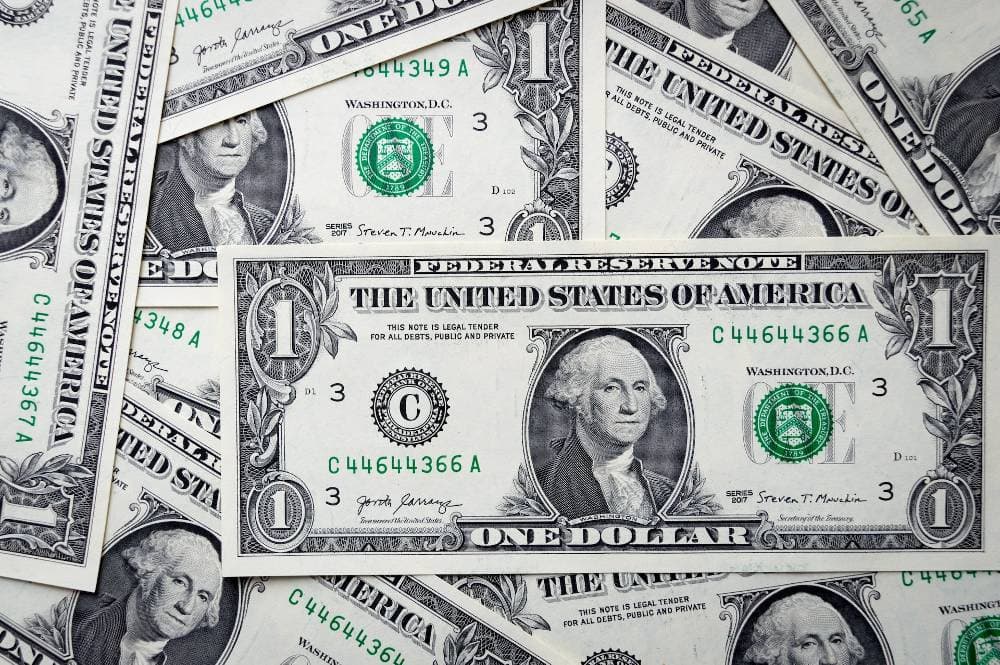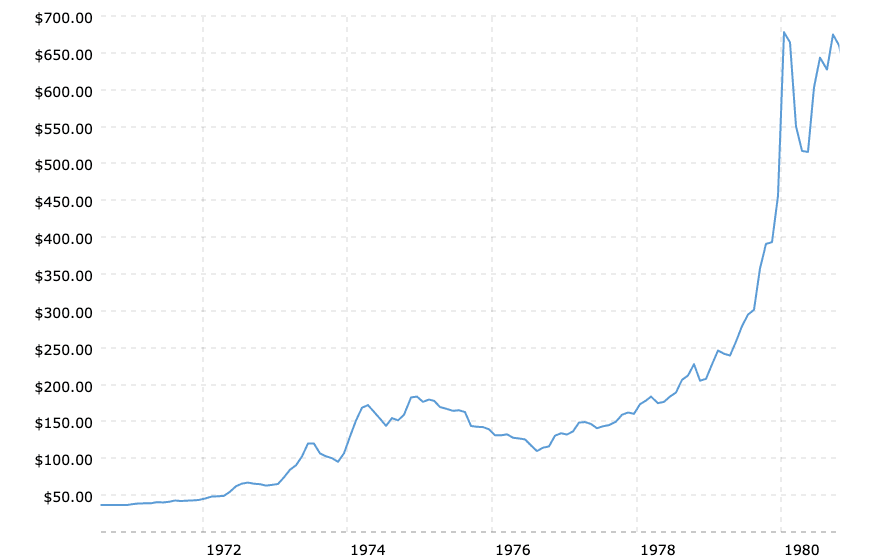It is no secret that fiat currencies around the world are in a state of perpetual devaluation. Over time, all paper money (or "fiat currency") eventually fails. This is because it is not backed by anything tangible, like gold or silver. As a result, governments and central banks can print as much of it as they want -- which inevitably leads to inflation and a loss of value for citizens.
If you're looking for an investment that will hold its value in the long run, then you should consider investing in gold and silver. In this blog post, we'll take a closer look at the history of fiat money and why it's destined to fail. We'll also explore what you need to do to protect your wealth in the event of a currency collapse.
What is the meaning of paper money?
To understand fiat currencies, we must first understand the meaning of money itself. Money is a tool that we use to exchange goods and services. It is a way of making trade easier and more efficient.
In a barter system, people would trade goods directly with each other. For example, if you had a cow and I had a chicken, we could trade our respective animals and both be better off. But what if I didn't have anything that you wanted? What if I only had a bushel of wheat? To make the trade, we would have to find someone who had a cow and also wanted wheat.
This is where money comes in. Money is a way of making trade easier by serving as a universal medium of exchange. Money is also a store of value, which means it can be saved and exchanged for goods and services at a later time.

Denarius - the Roman silver coins that lost their value
The first thing to understand about fiat money is that it's nothing new. It has a long and sordid history dating back to the Roman Empire.
The Roman Empire was once one of the most powerful empires in the world but to pay for its many wars, the Western Roman Empire began debasing its currency. This is the process of lowering the value of a currency by adding more base metals (like copper) to silver or gold coins.
For example, the Roman silver coin named denarius was originally made of pure silver. But over time, the government began adding more and more copper to the denarius. Eventually, the coin was made mostly of copper with just a thin layer of silver on the surface.
This had two effects. First, it devalued the currency, since each coin was now worth less than before. Second, it created inflation, since there was more money in circulation but each coin was worth less.
The Roman Empire continued debasing its currency until it collapsed in 476 AD. By the end, a denarius was made mostly of copper and was worth very little. The Roman Empire is just one example of why fiat money always eventually fails.
The history of paper money
Throughout history, different societies have used different forms of money. For example, gold and silver coins. In more recent times, paper money has become the most common form of currency.
According to Wikipedia, The first paper money was introduced in China around the 7th century. At first, it was used as a way of storing value, much like gold and silver. But eventually, paper money became a medium of exchange and was used to buy goods and services.
The use of paper money spread to other parts of Asia and then to Europe. In 1695, the Bank of England began issuing paper money known as banknotes. The United States followed suit in 1863.
Fiat currency is simply paper money that is not backed by any physical commodity. In other words, it has no intrinsic value. The only thing that gives fiat currency value is the government's promise to accept it in exchange for goods and services.
Unfortunately, this promise is often broken. Governments print too much money, which leads to inflation and the devaluation of their currency. This is why fiat money always eventually fails.

A monetary history of the United States
The United States has a long and complicated monetary history.
In 1863 greenbacks were introduced
Paper money began being used in the US in 1863 during the Civil War. The Union government needed a way to finance the war, so it began issuing paper notes called greenbacks. These notes were not backed by any physical asset, but they were used to pay for goods and services nonetheless. The use of fiat money gradually spread throughout the country.
The Federal Reserve was created in 1913
In 1913, the Federal Reserve was created. The Fed is the US central bank and it has the authority to print money. The Fed was originally intended to stabilize the US economy by controlling money creation.
Initially, dollars created were 40% backed by gold. The deflationary years of the Great Depression pressured Fed's dollar system. Major banks sometimes had to sell gold as there was nothing else left holding value.
The gold confiscation in 1933
In 1933 the US government took a major step towards fiat money. President Roosevelt confiscated all privately held physical gold and made it illegal to own gold. From that point on, residents could only keep a maximum of five ounces. All other gold had to be swapped at any bank for $20.67 per ounce. If anyone was caught holding gold after the deadline, they would face a fine of $10,000 and imprisonment for 10 years.
After Roosevelt took the gold away from his citizens at $20.67/oz, he revalued it shortly after to $35/oz. However, what the public didn't know was that this served as a way for Roosevelt to devalue the dollar. Without any other options, debasement became the government's go-to method during difficult economic periods, similar to what happened in Roman times.
The Bretton Woods agreement in 1944
In 1944, the Bretton Woods Agreement was reached. This agreement pegged the US dollar to gold at $35/oz. Central banks around the world agreed to hold their reserves in US dollars and redeem them for gold on demand.
The Bretton Woods Agreement lasted for about 30 years. During that time, the US dollar was the world's reserve currency.
The Nixon shock in 1971
However, in 1971 the Bretton Woods Agreement finally broke down. The US government was spending more money than it could afford and it began printing more dollars to finance its deficit. As a result, central banks around the world started redeeming their dollars for gold.
In an attempt to stop the outflow of gold, President Nixon shocks the world by suspending the convertibility of the US dollar into gold. From that point on, the US dollar was no longer backed by any physical commodity. It became a pure paper currency.
Nixon's 1971 speech caused the value of the US dollar to plummet by 23% against other currencies. This sparked inflation, energy market instability, and general economic problems that would become more prevalent later in the decade.
Gold becomes legal again in 1974
In 1974, Congress passed a law that made it legal for US citizens to own gold again. The price of gold was allowed to float freely on the market.
Before the day President Richard Nixon removed the United States from the Bretton Woods Agreement, gold was pegged at $35/ounce. The very first day that it became legal for US citizens to own gold again, it sold for $183.85 per ounce.

The gold price gradually decreased for about eighteen months after spiking 400% between 1971 and 1974. This was the ideal moment to invest. In the late seventies, gold would have an incredible journey, spiking and peaking at $850 per ounce in January of 1980. From start to finish, this marked a 23-fold increase from its former value of $35 per ounce.
We may be about to experience something similar today. As in 1971, an impending devaluation is no secret to investors who know where to look. Taking action now can result in some serious profits and the preservation of your wealth.
Devaluation - the dangers of fiat currency
To be re-elected governments always spend more money than what they currently have. When it is time to repay the debts, they often devalue their currency to make up for the lack of funds. Unfortunately, this has been a trend throughout history that does not seem to be changing anytime soon.
Governments get most of their money from taxes on things that happen inside their borders. This includes taxes on imports, exports, business profits, and personal income.
If we take the United States as an example it spent $3.13 trillion more than it received in tax in 2020 and $2.776 trillion in 2021. It sells bonds to make up that deficit. When the bonds come due, it sells more. The U.S. debt pile never shrinks.

The above chart shows the total U.S. Treasury debt outstanding. The crazy increase after the year 2000 has been possible since we had a long period with the lowest interest rates in human history. Borrowing on this scale is not possible in a free market. To keep money flowing, the U.S. has to suppress interest rates otherwise the country would be insolvent.
The federal reserve bank bought up the majority of the country's debt over the past years. If U.S. interest rates were determined by the free market, they would be set by market prices. 0% doesn't offer a good return and buyers and sellers would not agree on this price.
Recessions are not allowed anymore
In previous recessions, it was possible for businesses to go bankrupt and for people to lose their jobs. When people borrowed too much money during good times, it made it hard for them to survive during a recession. This is no longer the case. The government now props up failing businesses with loans and bailouts.
The 2008 crisis gave U.S. financial leaders the power to save some firms and purge others. That is a power that comes from a crisis. In a capitalist economy, when there is a recession, things will naturally get sorted out. The strong will survive and the weak will go bankrupt and disappear. This is what keeps an economy efficient. But when you have a central bank that can print money out of thin air, they can artificially keep things going.
The problem is that this creates even bigger bubbles. This time in stocks and real estate. When the bubble finally bursts, it is going to be much worse than in 2008. This time there will be no central bank to bail things out. They have already done everything they can do. They have already printed trillions of dollars and pushed interest rates to 0%.
A crisis, if not dealt with efficiently, will only grow and result in an eventual wipeout of the entire system. In retrospect, a recession would have been a better option.
Financial reset
One way or another, there will be an economic collapse and a reset of the financial system. The current system is not sustainable.
A financial reset means that the current system will eventually come to an end. This could mean a complete collapse of the economy or a more gradual decline. It could also mean that the government will have to come up with a new way of doing things. This could include a new currency or a return to the gold standard.
No one knows exactly what will happen or when it will happen, the reset only works if it happens when few expect it. But we do know that the current system is not sustainable and something will have to give.
Major changes always give advance notice. The problem is most people don't pay attention. They either don't want to, or they can't.

What happens when a currency collapses?
When a currency collapses, it can have devastating consequences. For example, in Zimbabwe, the government printed so much money that their own currency became worthless. People were literally using stacks of cash to buy bread. The inflation rate reached an astonishing 79.6 billion percent per month in 2008!
In Venezuela, four years of hyperinflation and the collapse of the currency have led to widespread poverty and malnutrition.
These are just two examples of what can happen when a monetary system and currency collapse. It's important to remember that fiat currencies always eventually fail. They are simply not sustainable in the long run.
What to own when the dollar collapses?
When the dollar and other foreign currencies collapse, you want to own things that will hold their value or increase in value. This includes gold, silver, and other physical precious metals. It also includes land, food, water, and other essential items.
You want to avoid owning things that will lose their value, such as cash, bonds, and stocks. You also want to avoid owning luxury items that are not essential for survival.
The most important thing is to have a plan. You need to know what you will do and what you will own when fiat money dies. Otherwise, you could end up like the people in Zimbabwe or Venezuela.
The benefits of investing in gold and silver
Gold and silver have been used as a form of currency for centuries. They are rare, durable, and have many uses. This makes them valuable and gives them the ability to hold their value over time.
Investing in gold and silver is a good way to protect your wealth from inflation and the collapse of fiat currencies.
Final words
The monetary history of the world is full of examples of civilizations that have collapsed because they debased their currency. The Roman Empire did it by replacing silver with copper in their coins. As a result, inflation soared, and the empire eventually collapsed.
The United States is doing the same thing today. The government has been printing more and more money, diluting the value of the dollar. Inflation is already starting to accelerate, and it's only a matter of time before the dollar collapses.
When that happens, you need to be prepared. Owning gold and silver will protect your wealth from the inflation that will inevitably follow. Gold and silver have been used as money for thousands of years, and they will retain their value even when the dollar is worthless.
So don't wait until it's too late. Invest in gold and silver today to protect your wealth from the coming currency collapse.

